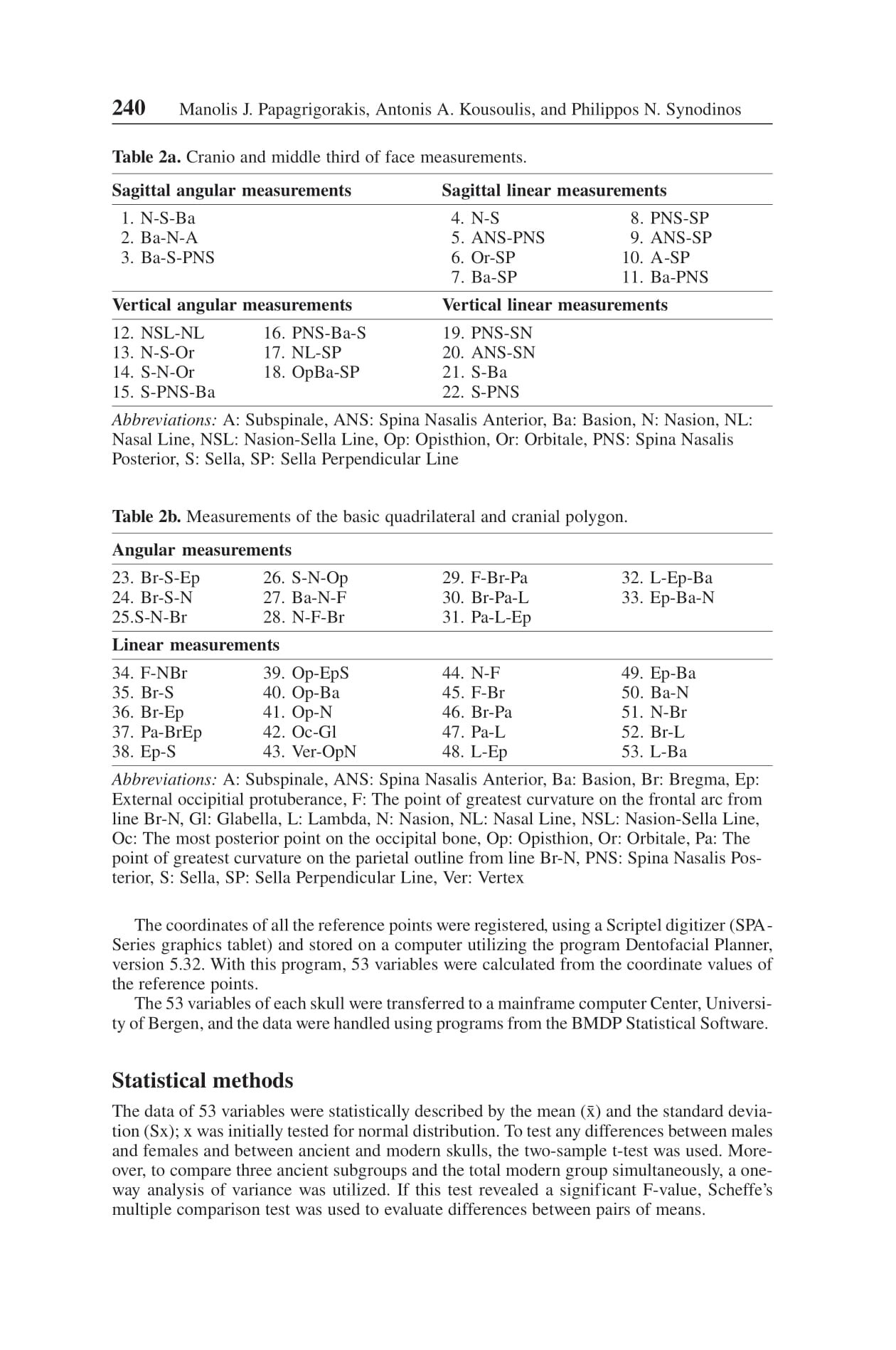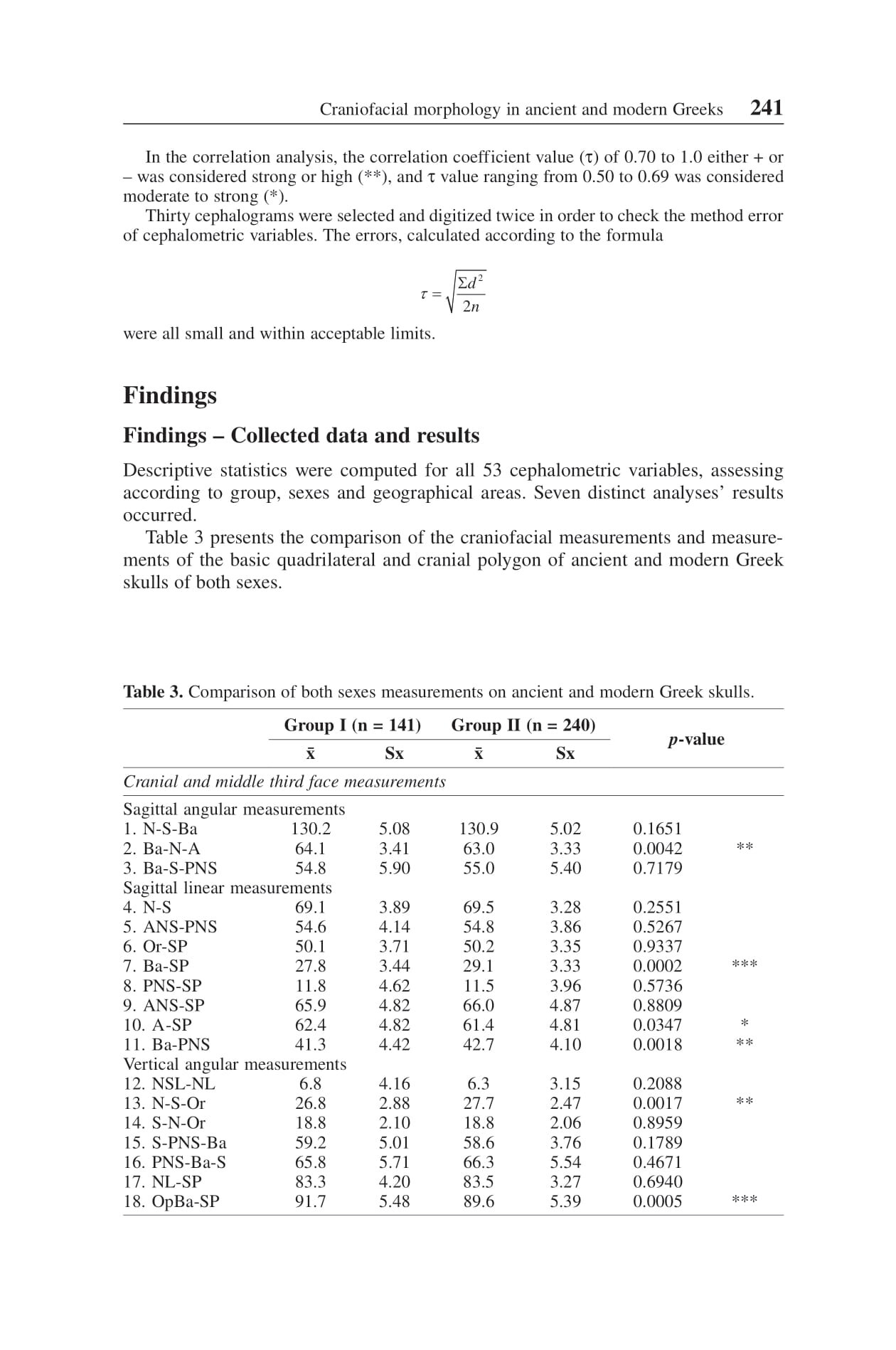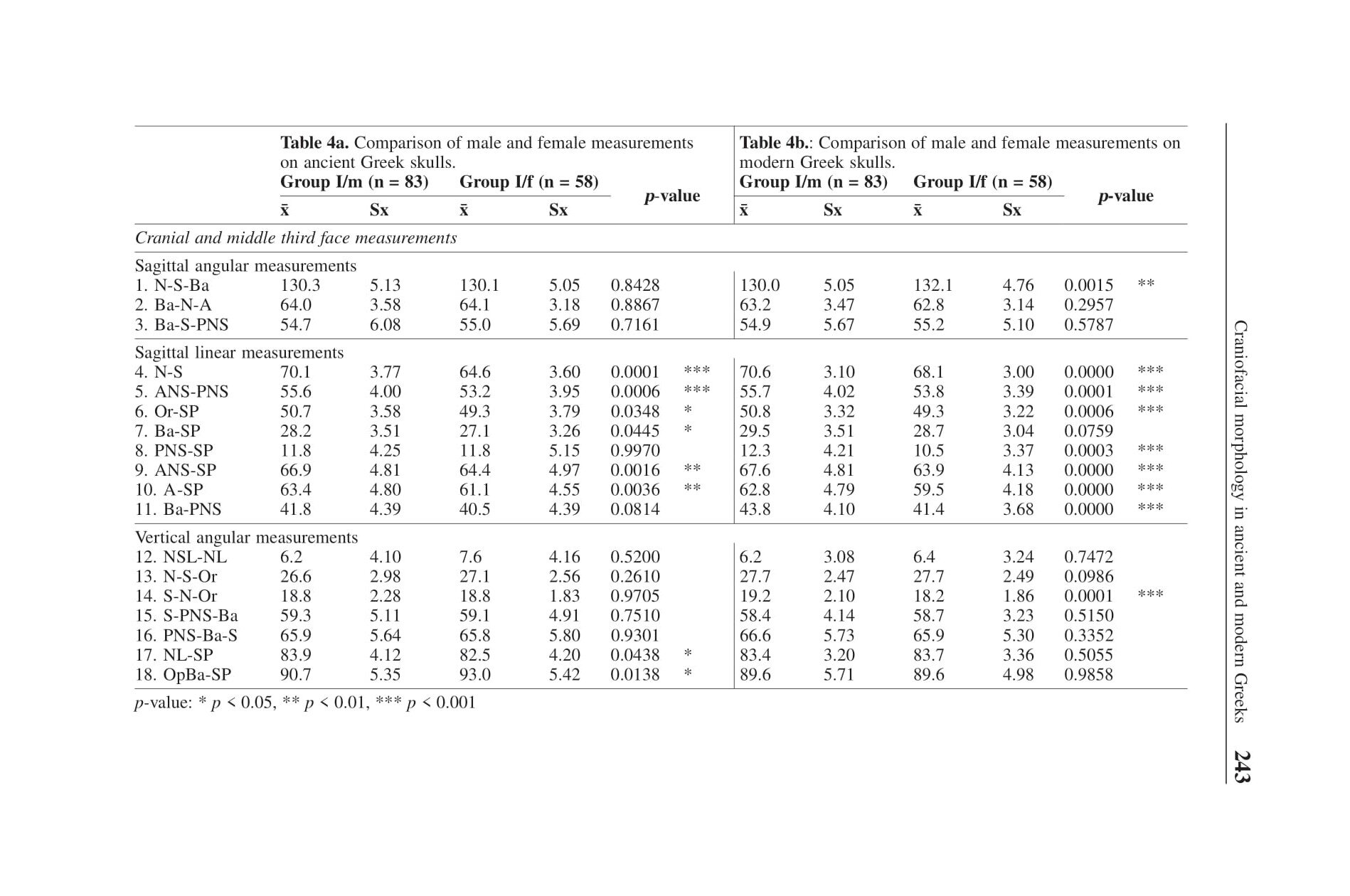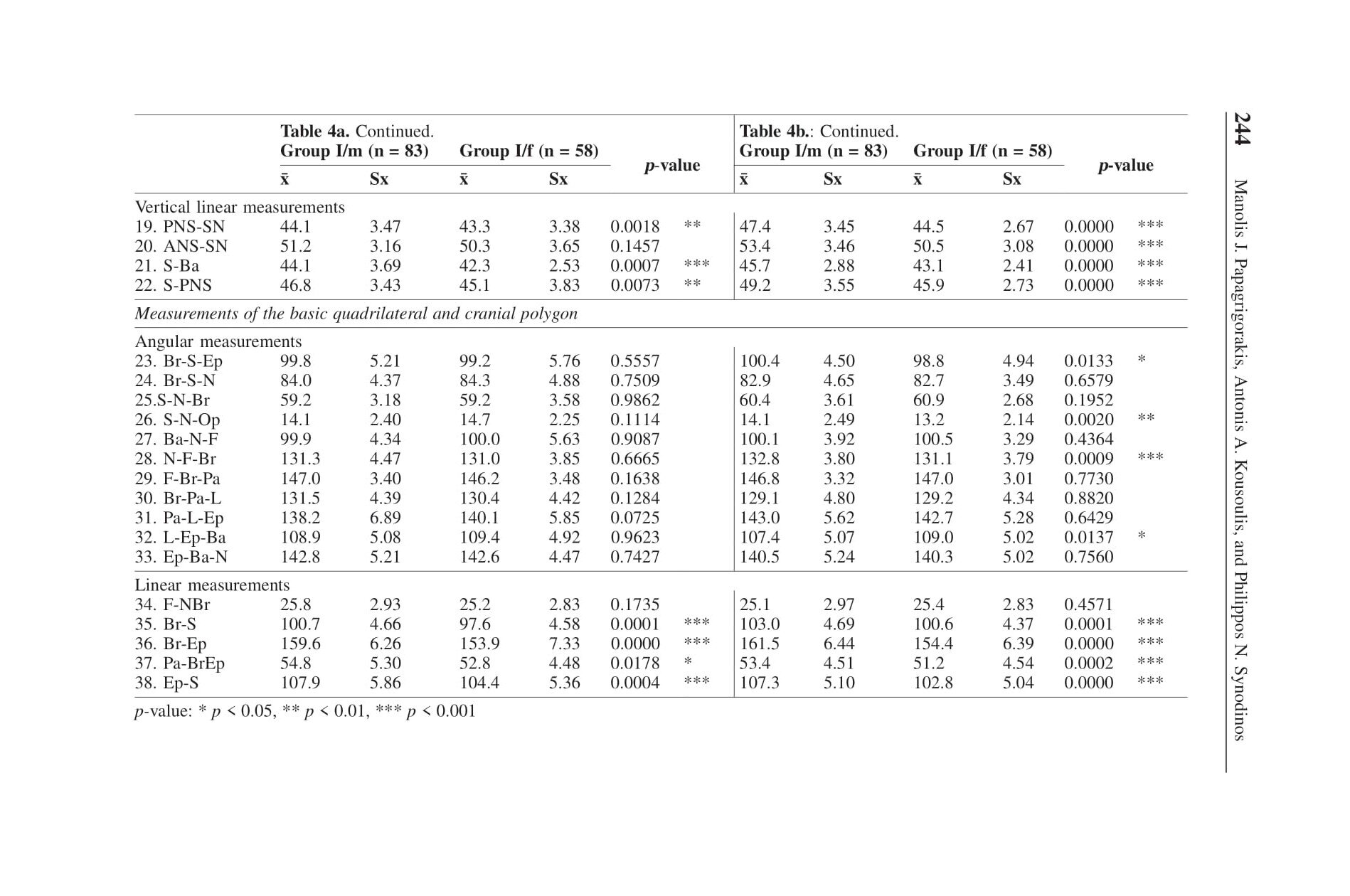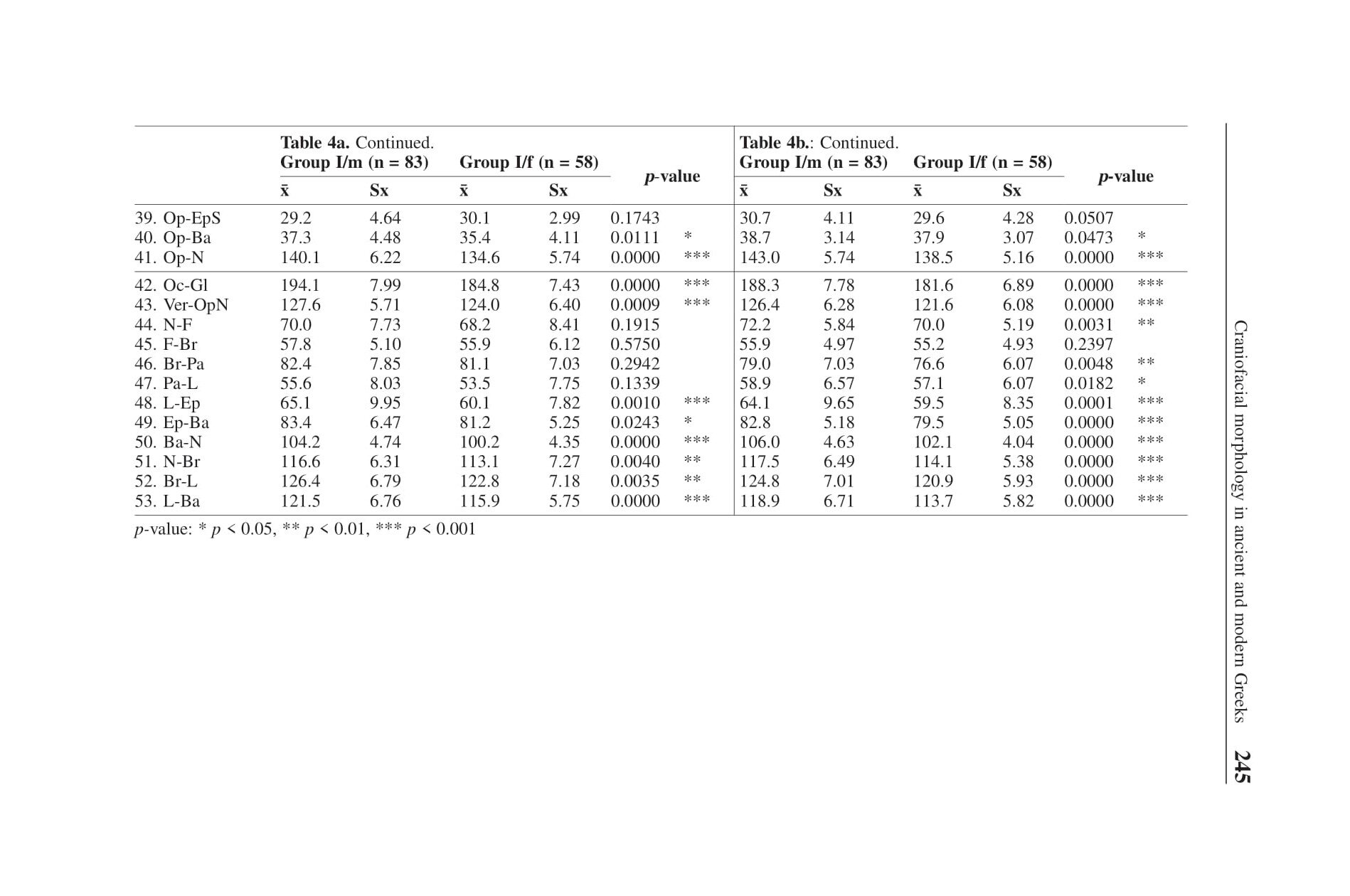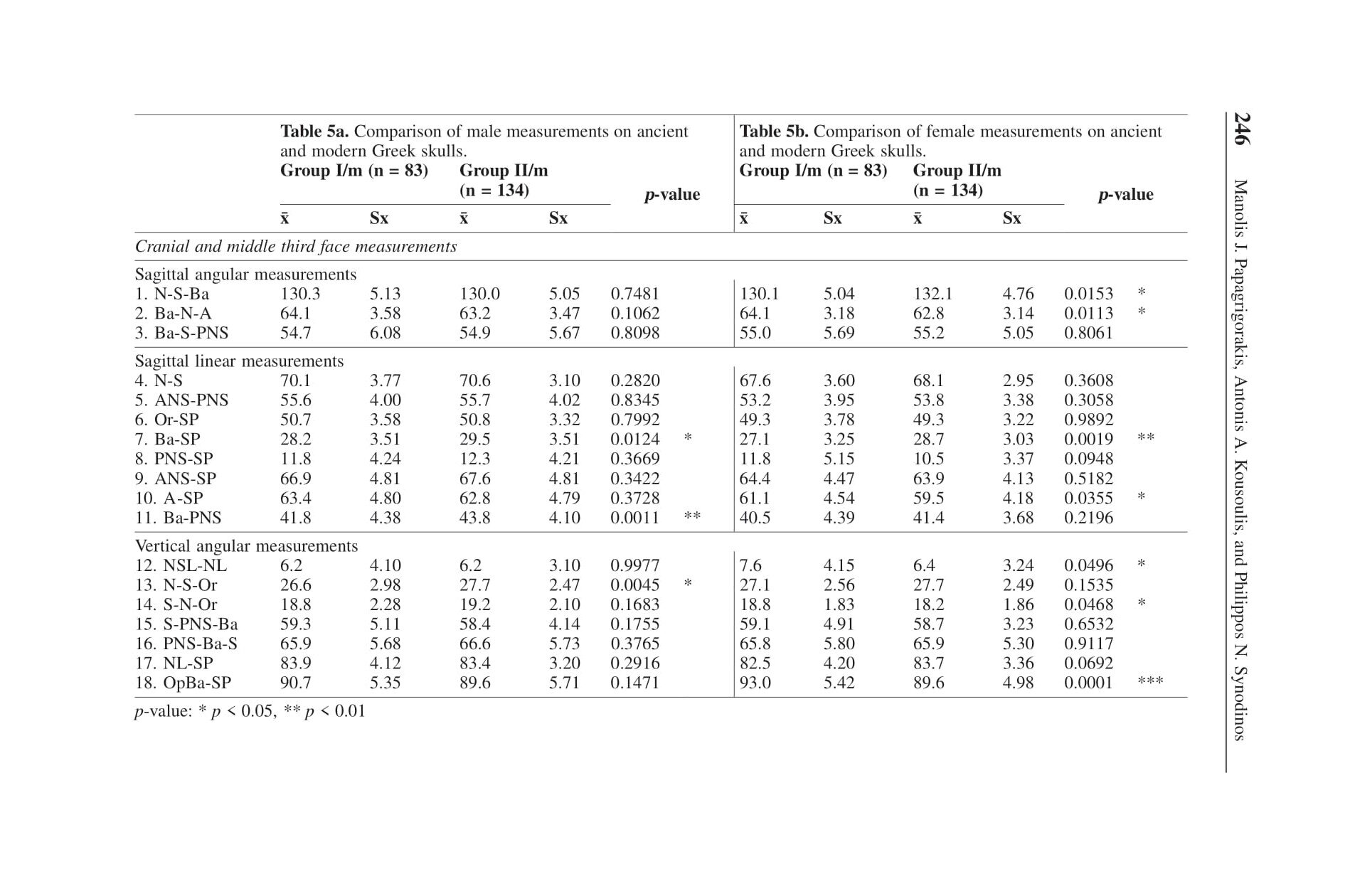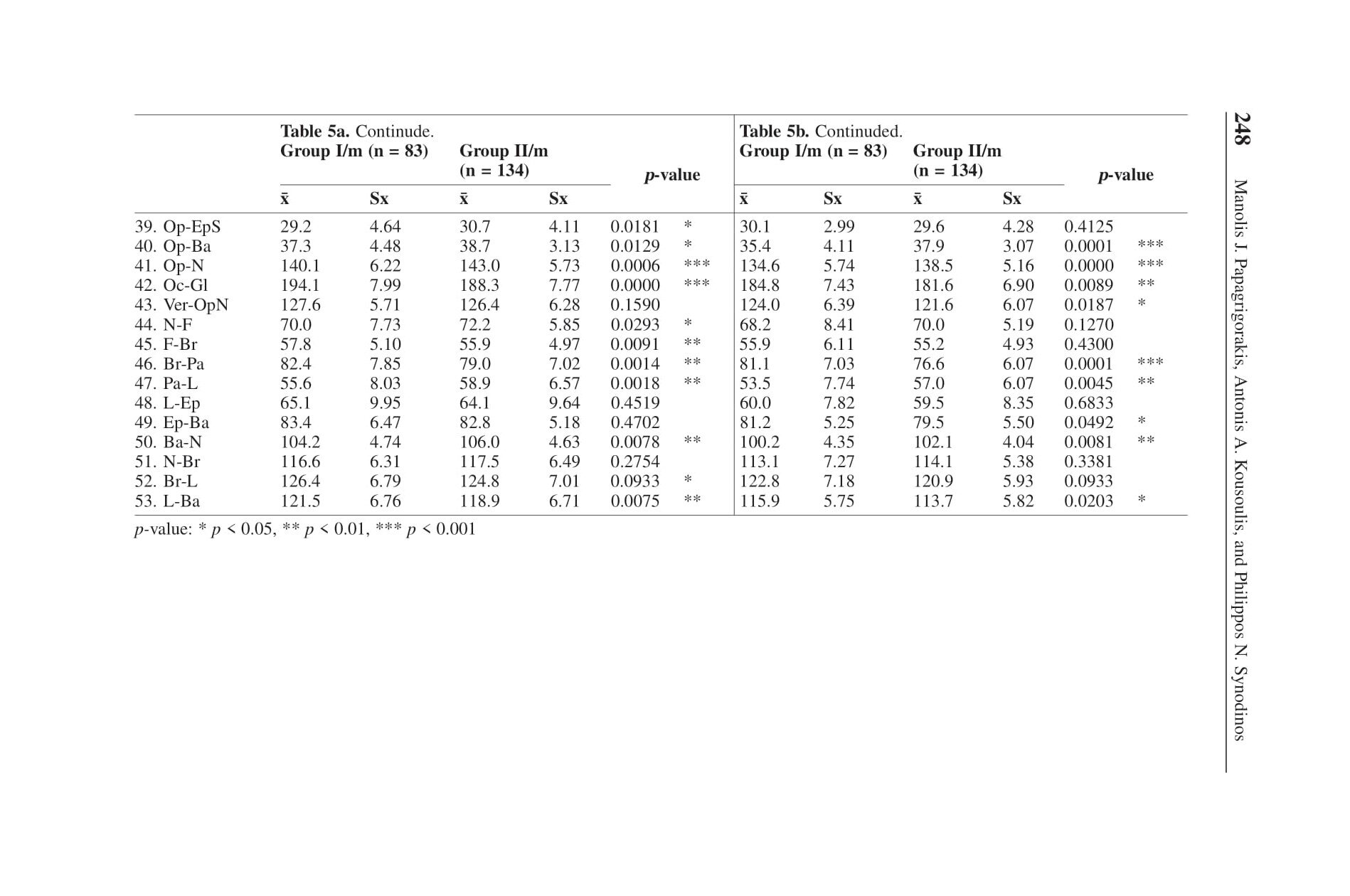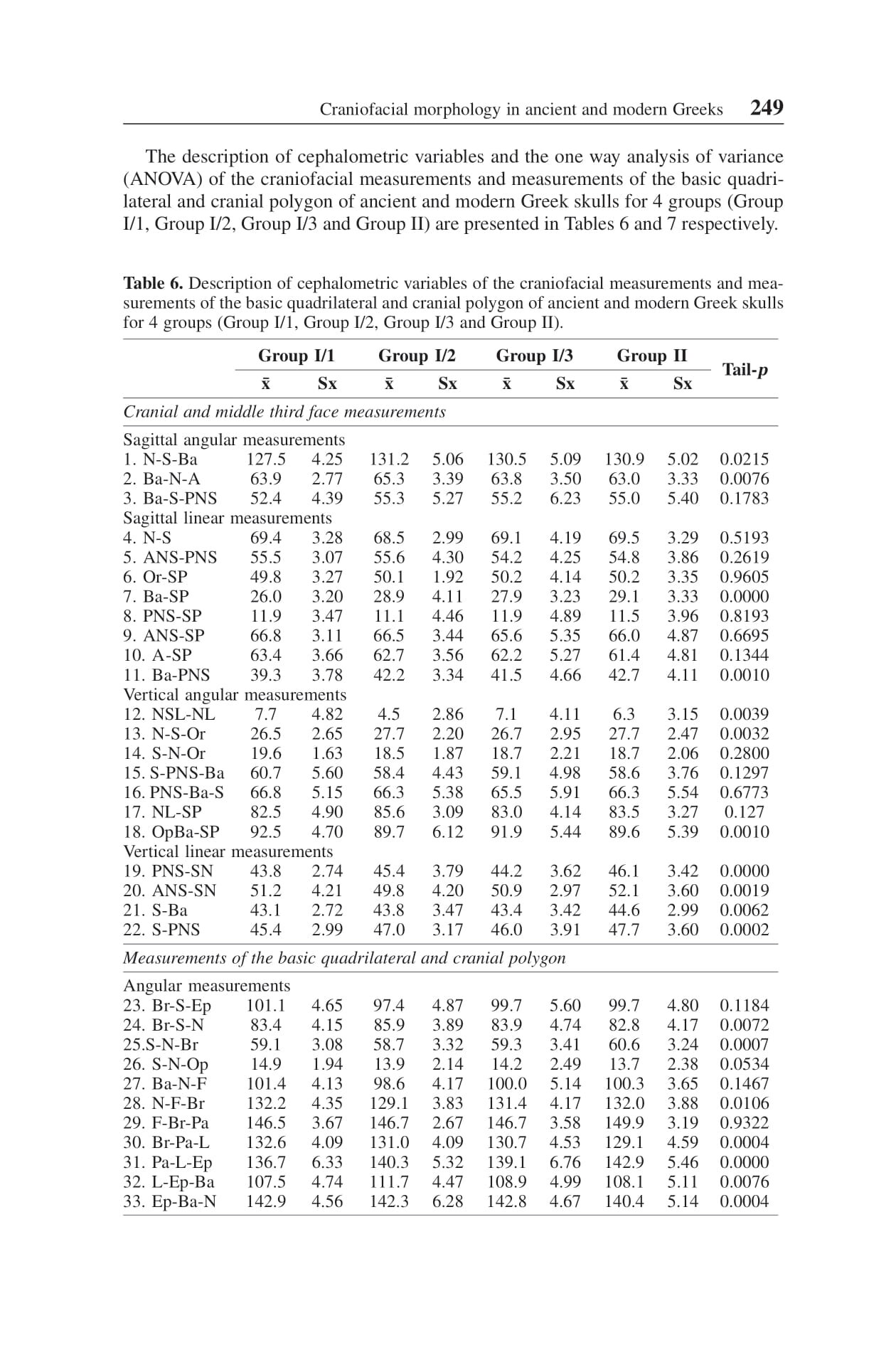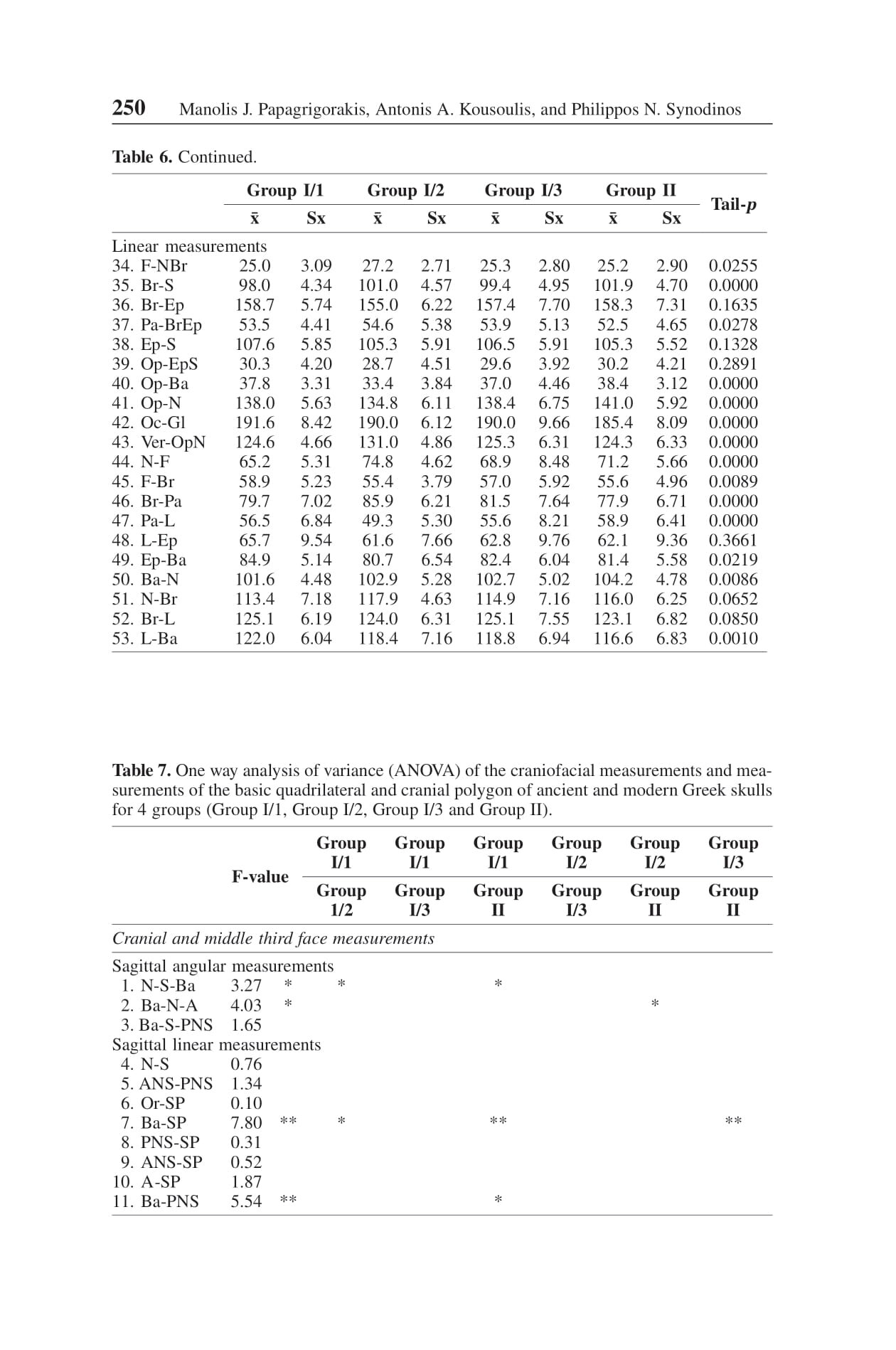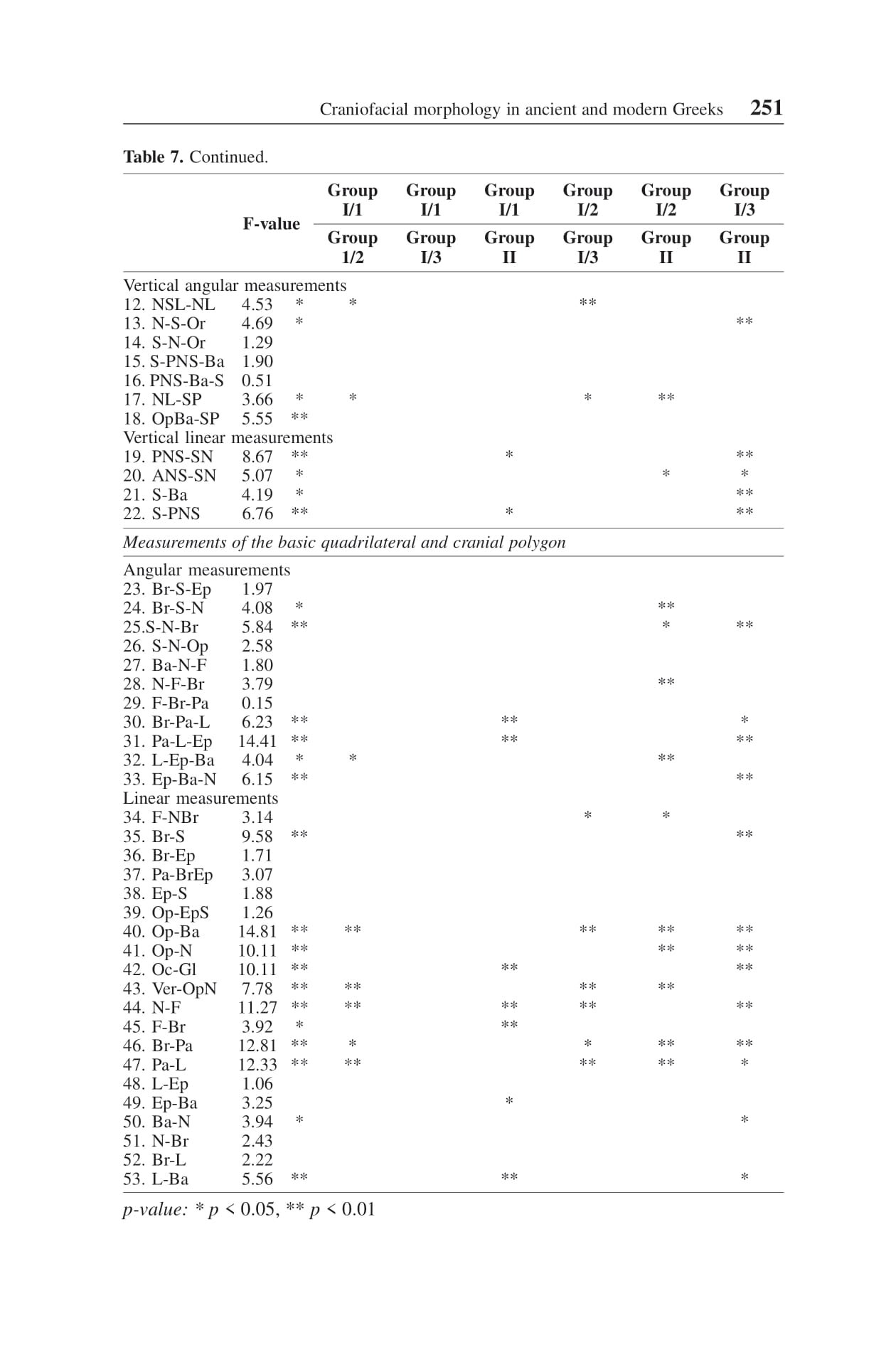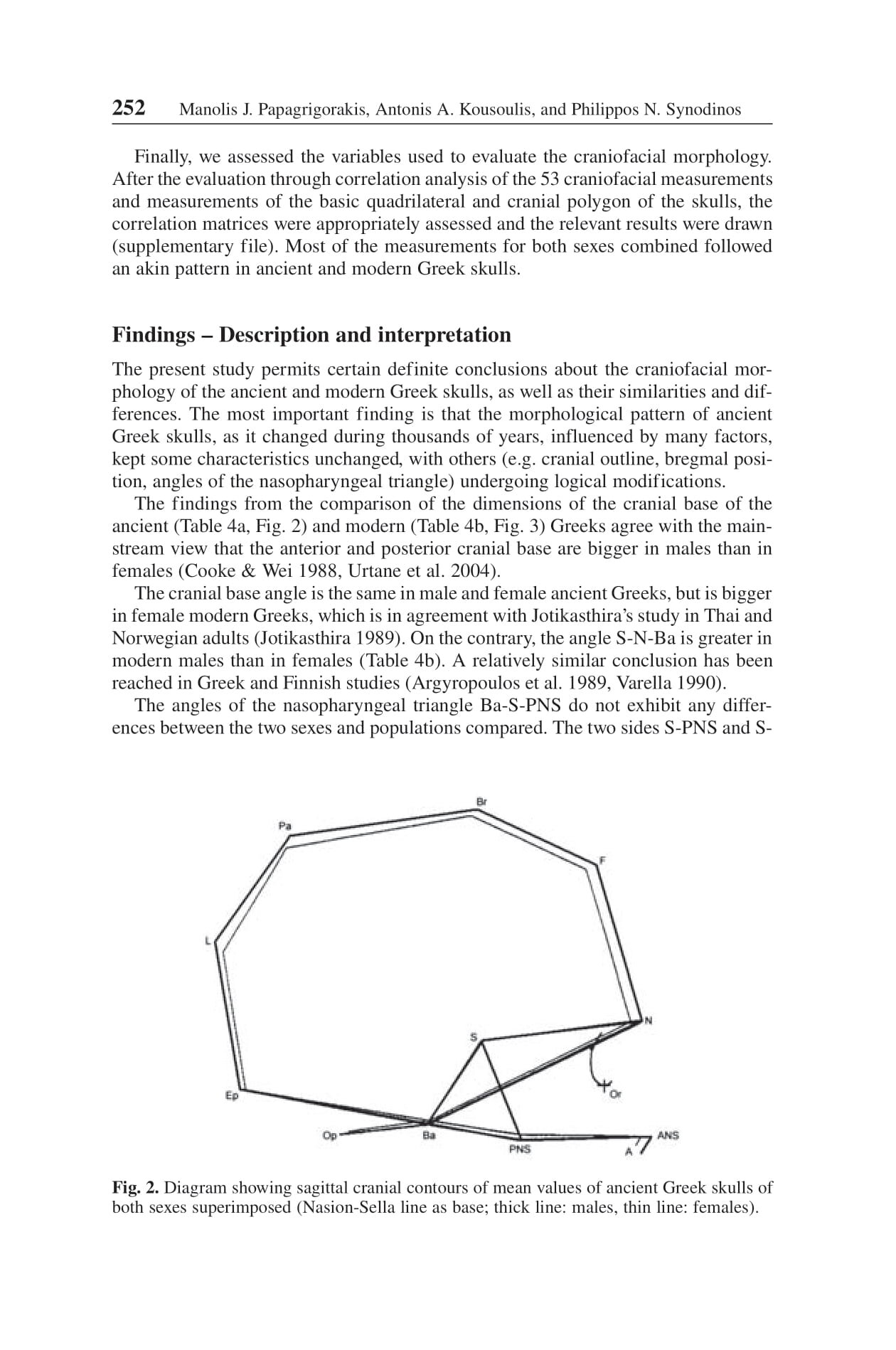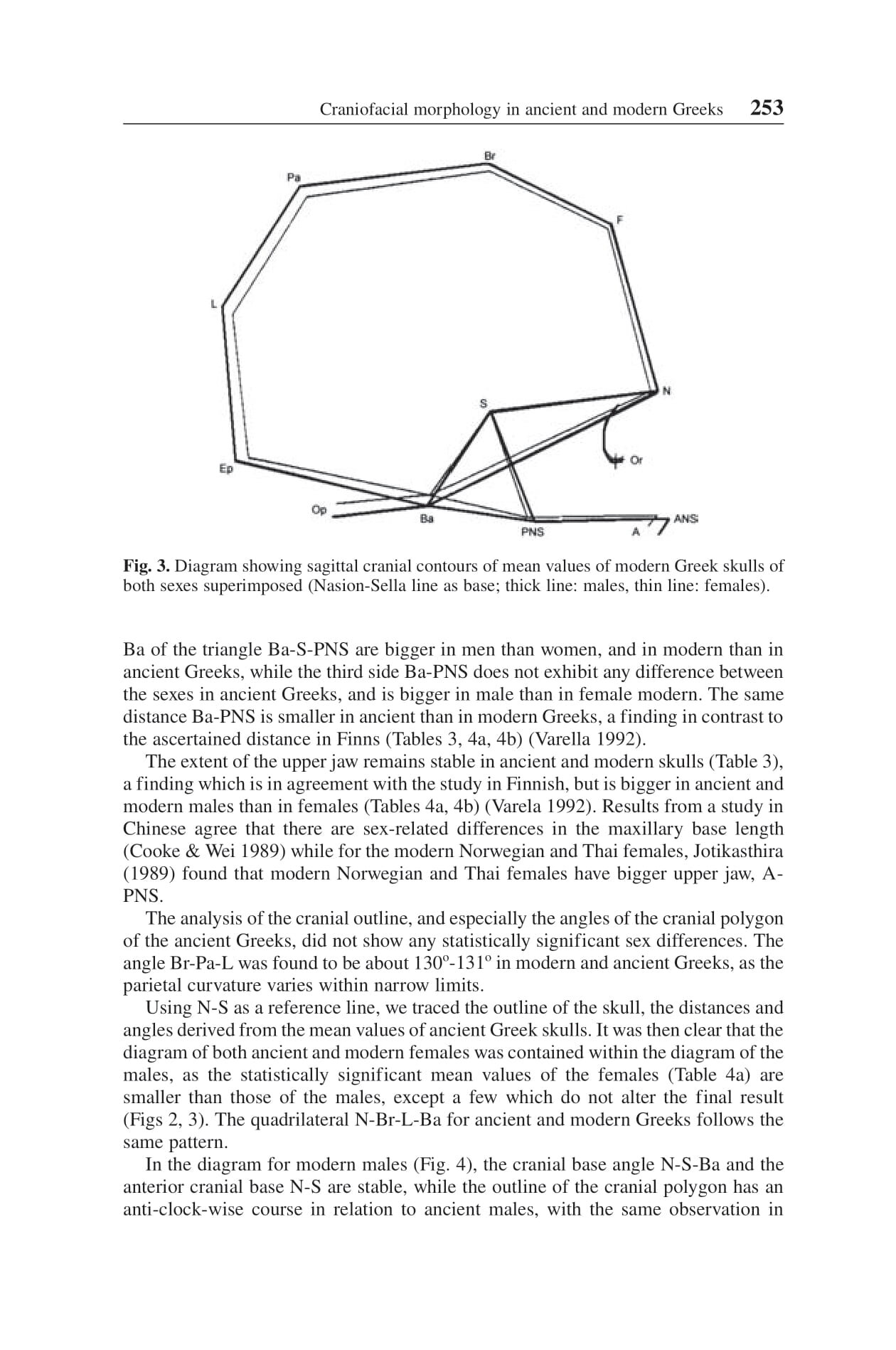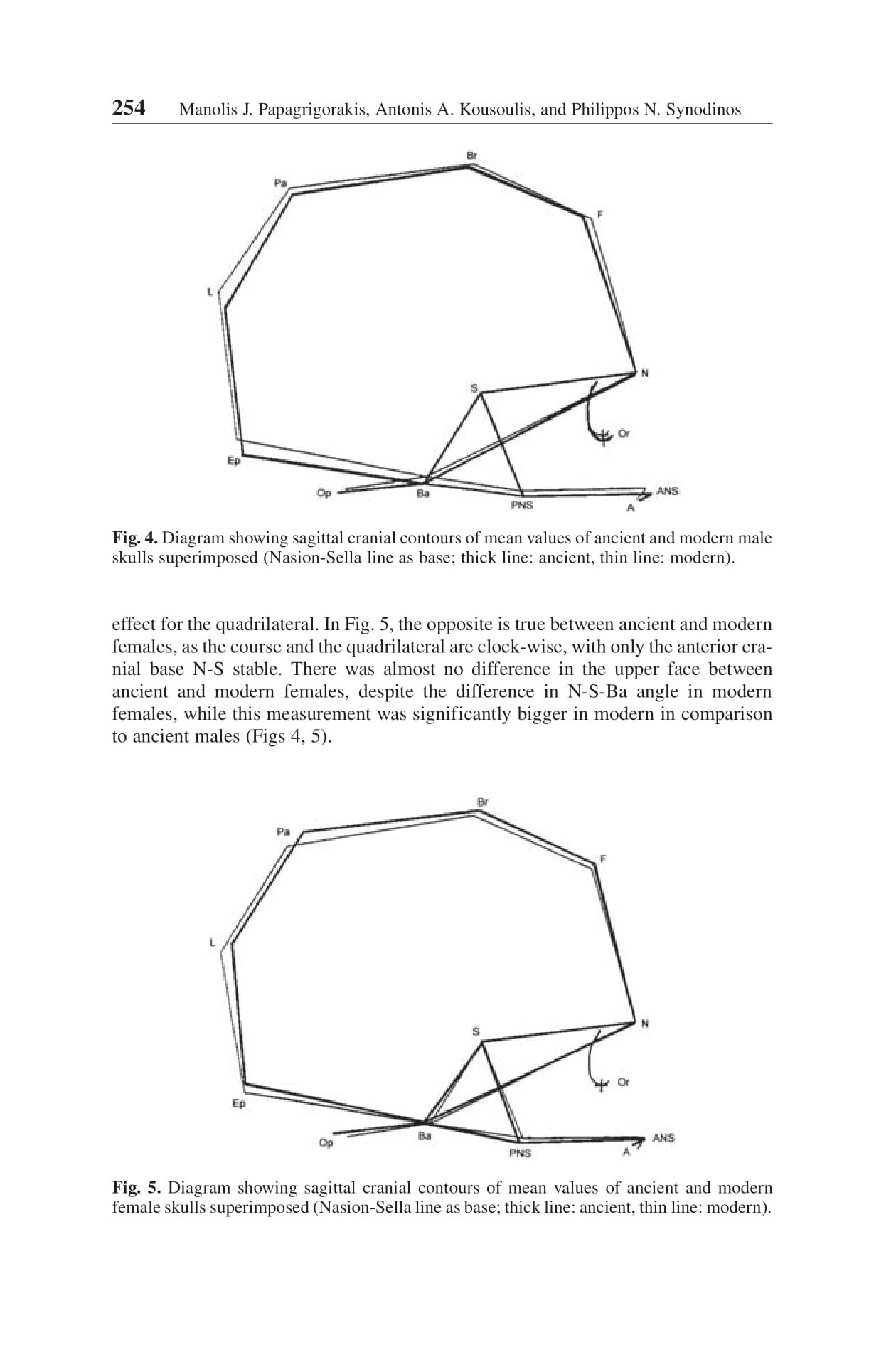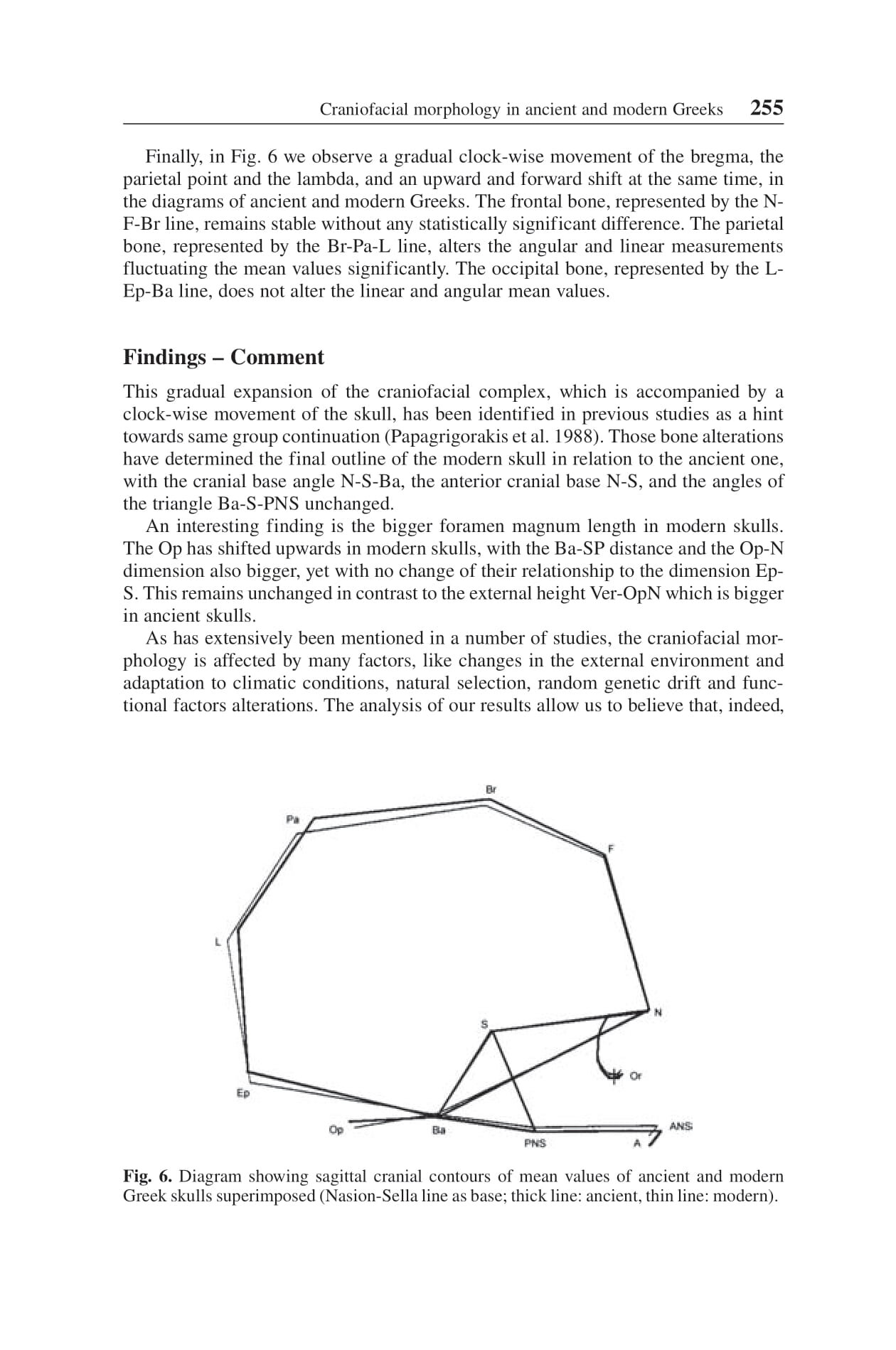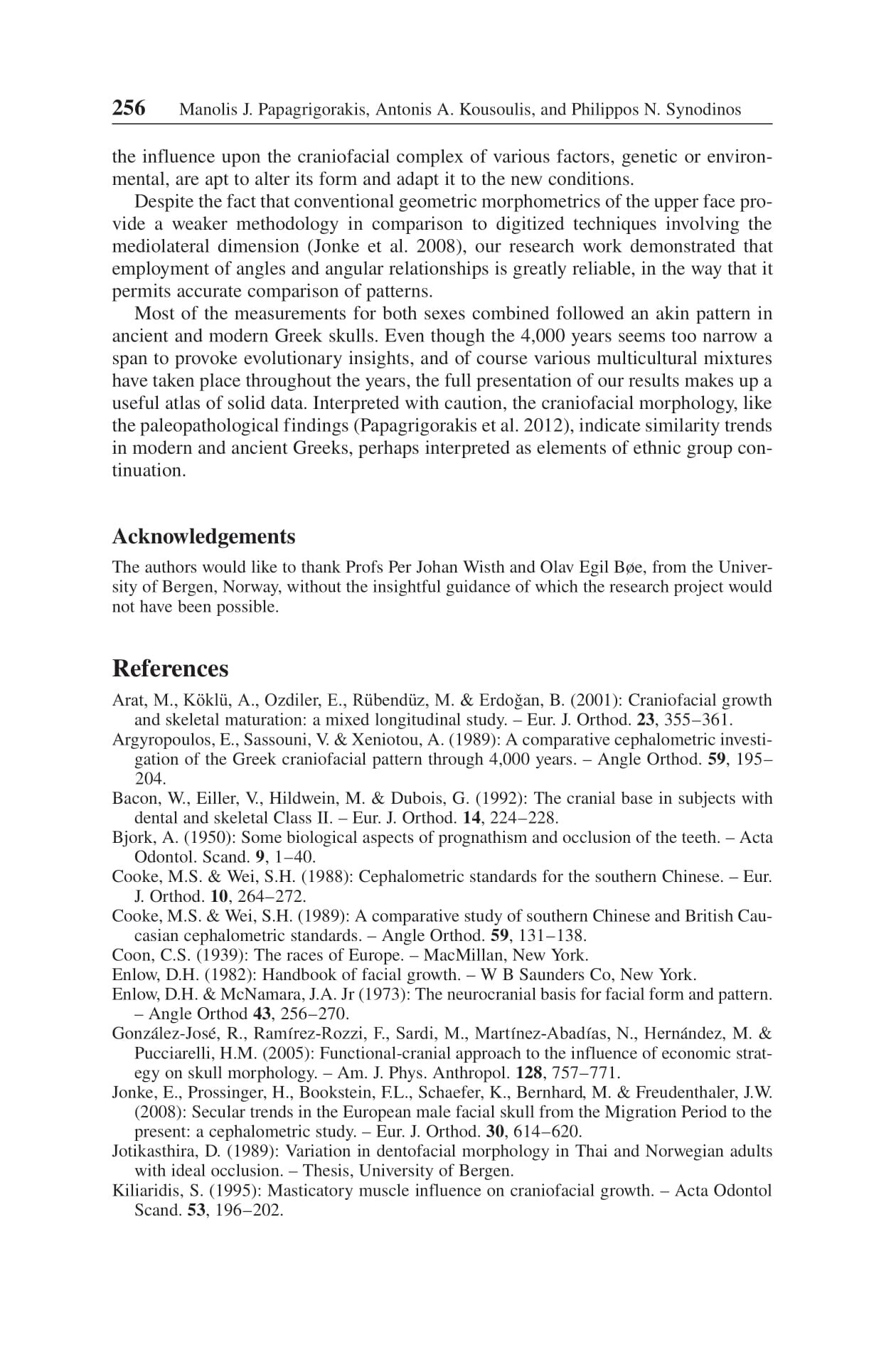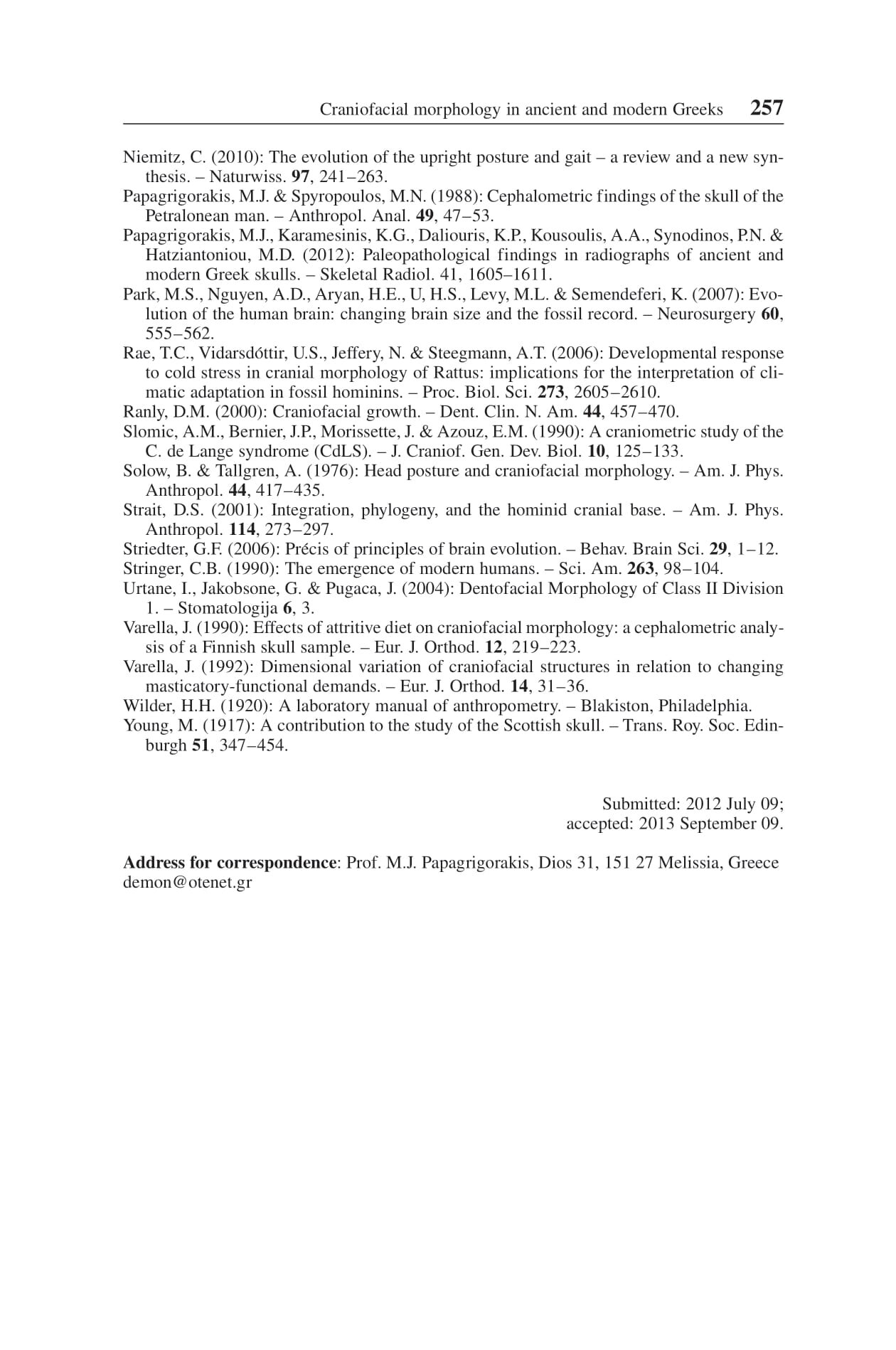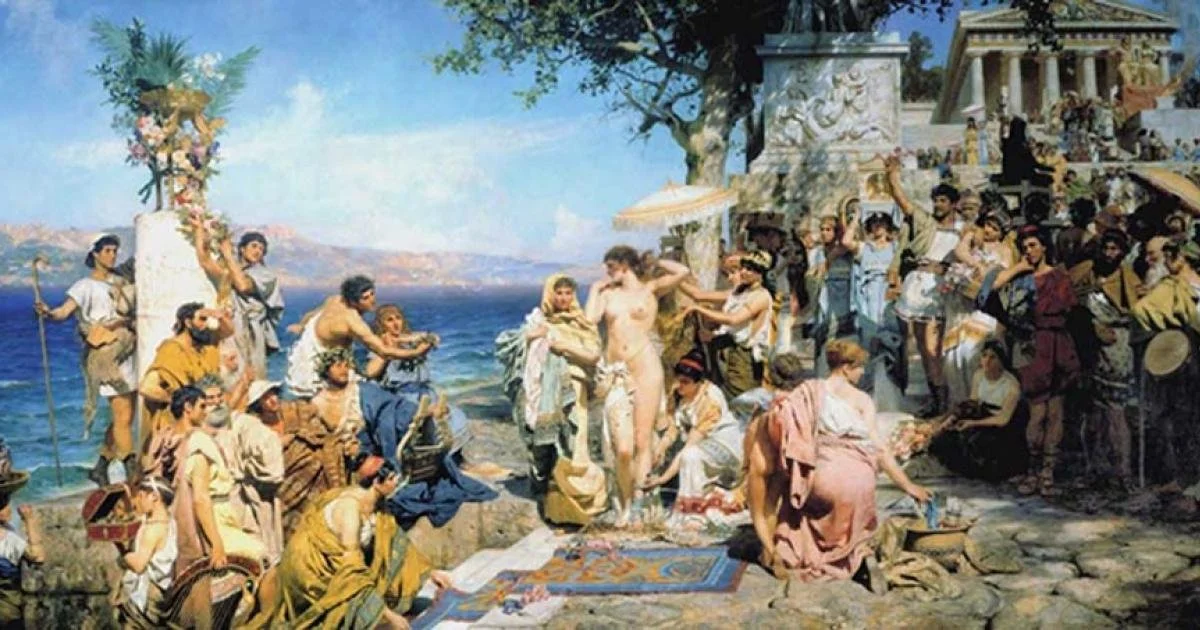Multiple 20th century studies have speculated on the anthropological similarities of the modern inhabitants of Greece with their ancient predecessors.
The present investigation attempts to add to this knowledge by comparing the craniofacial configuration of 141 ancient (dating around 2,000–500 BC) and 240 modern Greek skulls (the largest material among relevant national studies).
By Manolis J. Papagrigorakis, Antonis A. Kousoulis, and Philippos N. Synodinos
Department of Paleopathology, University of Athens, Greece. demon@otenet.gr
Method: Skulls were grouped in age at death, sex, era and geographical categories; lateral cephalograms were taken and 53 variables were measured and correlated statistically. The craniofacial measurements and measurements of the basic quadrilateral and cranial polygon were compared in various groups using basic statistical methods, one-way ANOVA and assessment of the correlation matrices. Observations: Most of the measurements for both sexes combined followed an akin pattern in ancient and modern Greek skulls. Moreover, sketching and comparing the outline of the skull and upper face, we observed a clock-wise movement.
The present study confirms that the morphological pattern of Greek skulls, as it changed during thousands of years, kept some characteristics unchanged, with others undergoing logical modifications. Conclusion: The analysis of our results allows us to believe that the influence upon the craniofacial complex of the various known factors, including genetic or environmental alterations, is apt to alter its form to adapt to new conditions.
Even though 4,000 years seems too narrow a span to provoke evolutionary insights using conventional geometric morphometrics, the full presentation of our results makes up a useful atlas of solid data. Interpreted with caution, the craniofacial morphology in modern and ancient Greeks indicates elements of ethnic group continuation within the unavoidable multicultural mixtures.
Background One of the basic morphological alterations, occurring during the evolutionary period of mankind, was the tendency of the brain to enlarge, which had as a result the gradual expansion of the braincase (Park et al. 2007, Enlow & McNamara 1973). The craniofacial complex has been established as an anatomic characteristic of paramount importance, which underwent such decisive changes that it determined the evolution to Homo sapiens sapiens (Enlow 1982). The presence of a relationship between craniofacial morphology and head posture has been indicated by the comprehensive sys-tem of associations between variable characteristics expressing the size, shape and position of the craniofacial components on the one hand, and those expressing the postural relationships of the head and cervical column on the other (Solow & Tallgren 1976). Hominin orthograde locomotion evolved several million years before an accelerated brain growth, documented by hominin fossils (Niemitz 2010). It seems that the formative changes of the skull are more or less concurrent, while the evolutionary change in the cranial base can be related to a differentiated development of the brain, since the occipital part is proportionally enlarged in humans (Striedter 2006). The organization of the cranial base, whose transformations have contributed decisively to evolution, is influenced by locomotion and posture (Strait 2001) within both polyphyletic phylogenetic lines with genetic isolation (Stringer 1990).
The human skull resolves into subunits, namely, the neurocranium, the basicranium and the face, each of them with a distinct function (Bacon et al. 1992). All anthropometric characteristics are usually genetically complex and also subject to environmental influence, including physical factors, such as altitude, climate (Rae et al. 2006) and mechanical forces, with the masticatory and alveolar regions contributing to discriminate better among economic strategies rather than between local populations (Kiliaridis 1995). When taking into account the total craniofacial shape, variation is more clearly patterned by structural-historical aspects of the population than by some important non-genetic differences (Gonzalez-Jos ´ e et al. 2005). ´
As far as craniofacial structural changes related to ageing are concerned, the cranial base, which matures earlier than the face and maintains its stability, can be used cephalometrically as a relatively stable reference area (Ranly 2000). Despite the intensified increases in both the sagittal and vertical directions, facial characteristics remain constant in the sagittal direction (Arat et al. 2001).
Summarizing the above points, many factors in relation to craniofacial morphology have hadtheir own contribution, slight or serious,tothe alterationsthat have determined the morphology of modern man. Moreover, multiple 20th century studies have speculated on the causes of the striking anthropological similarities of modern inhabitants of Greece with their ancient predecessors (Coon 1939, Argyropoulos et al. 1989).
In this context, with the present investigation we aimed to present a useful atlas of data adding to the research on the craniofacial affinities between ancient and modern Greek skulls and to modestly comment on transitional patterns.
Material and methods
The material of this study consists of 141 ancient and 240 modern skulls (the largest material among relevant national studies) with the former taken from skeletal remains excavated from a number of cites in Greece, and the latter from the two biggest cemeteries of Athens. All the skulls were selected out of a big number available, and the criterion for selection was that they bore all the anatomical reference points.
Anthropologists determined the age at death and sex of the material, from the skull and the mandible (where present) (Manolis S. & Panagiaris G. 1992, personal communication). Archaeologists, who made the excavations, determined the era of their archaeological findings, which spanned from the Mesoelladic period around 2,000 BC until about 500 BC (Pentazos V. & Skorda D. 1992, personal communication).
The skulls were grouped into two categories: Group I [141 ancient Greek skulls – Group I/m for male skulls (83) and Group I/f for female (58) (Table 1)] with three subgroups: Group I/1 (21 skulls from Eani), Group I/2 (22 from Fokis), and Group I/3 (98, the rest of the ancient skulls of Group I), and Group II [240 modern Greek skulls – Groups II/m for male skulls (134) and Group II/f for female (106)]. The reason for subgrouping the skulls from Fokis and Eani is that these two geographical areas have had more or less homogeneous populations because they were closed societies.
Lateral roentgen cephalograms of the skulls were taken, with the left side facing the film, using the original Bjork’s principles (Bjork 1950). The distance between the X-ray focus and the median plane of the skull was 150 cm, and the distance between the median plane of the skull and the film was 9.5 cm with the Frankfort plane perpendicular to the film. The linear magnification in the median plane is 6.8 % and has not been corrected. The exposure time was 0.2 sec, with an apparatus setting of 60 kV and 5 mA, and the films used were DupontCronex 4, while the metal cassette used screens for quanta fast detailed film.
Cephalometric analysis Sixteen reference points were used as shown in Fig. 1 (Young 1917, Wilder 1920, Slomic et al. 1990) Metallic indicators were used for the two reference points Basion and Opisthion. There are two categories of variables: craniofacial measurements and measurements of the basic quadrilateral and cranial polygon (Table 2).
Fig. 1. The reference points.




